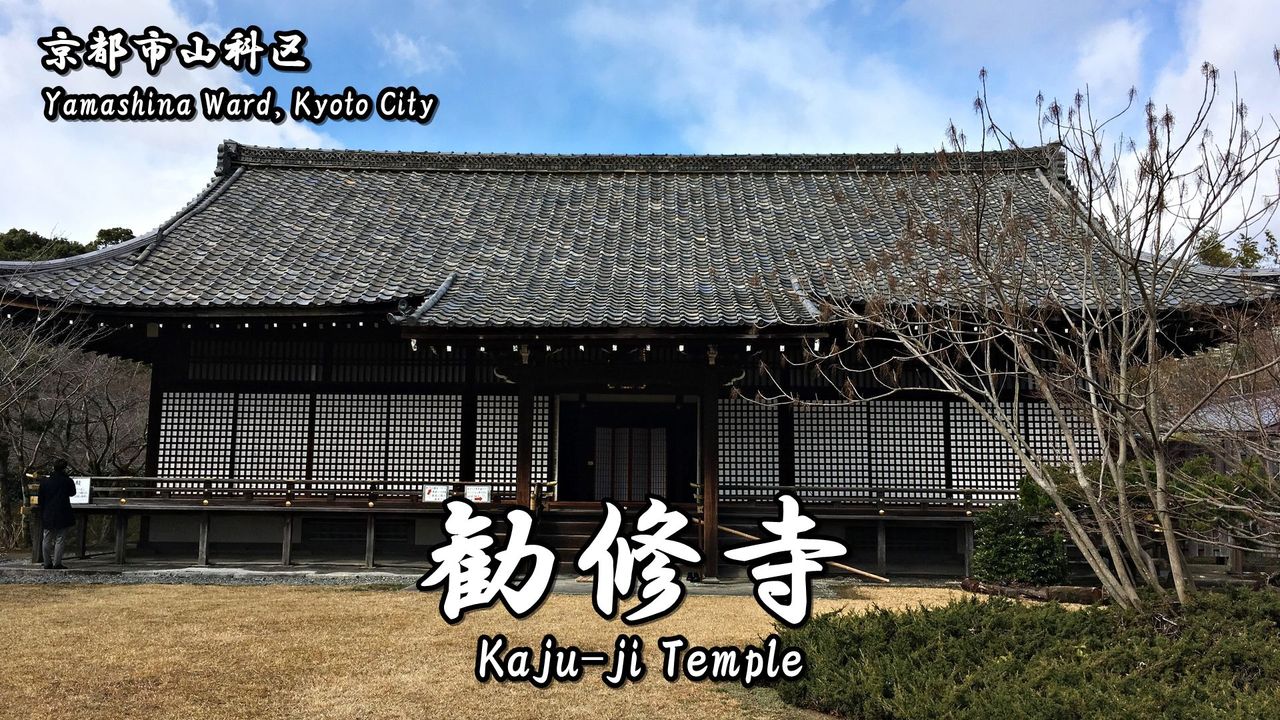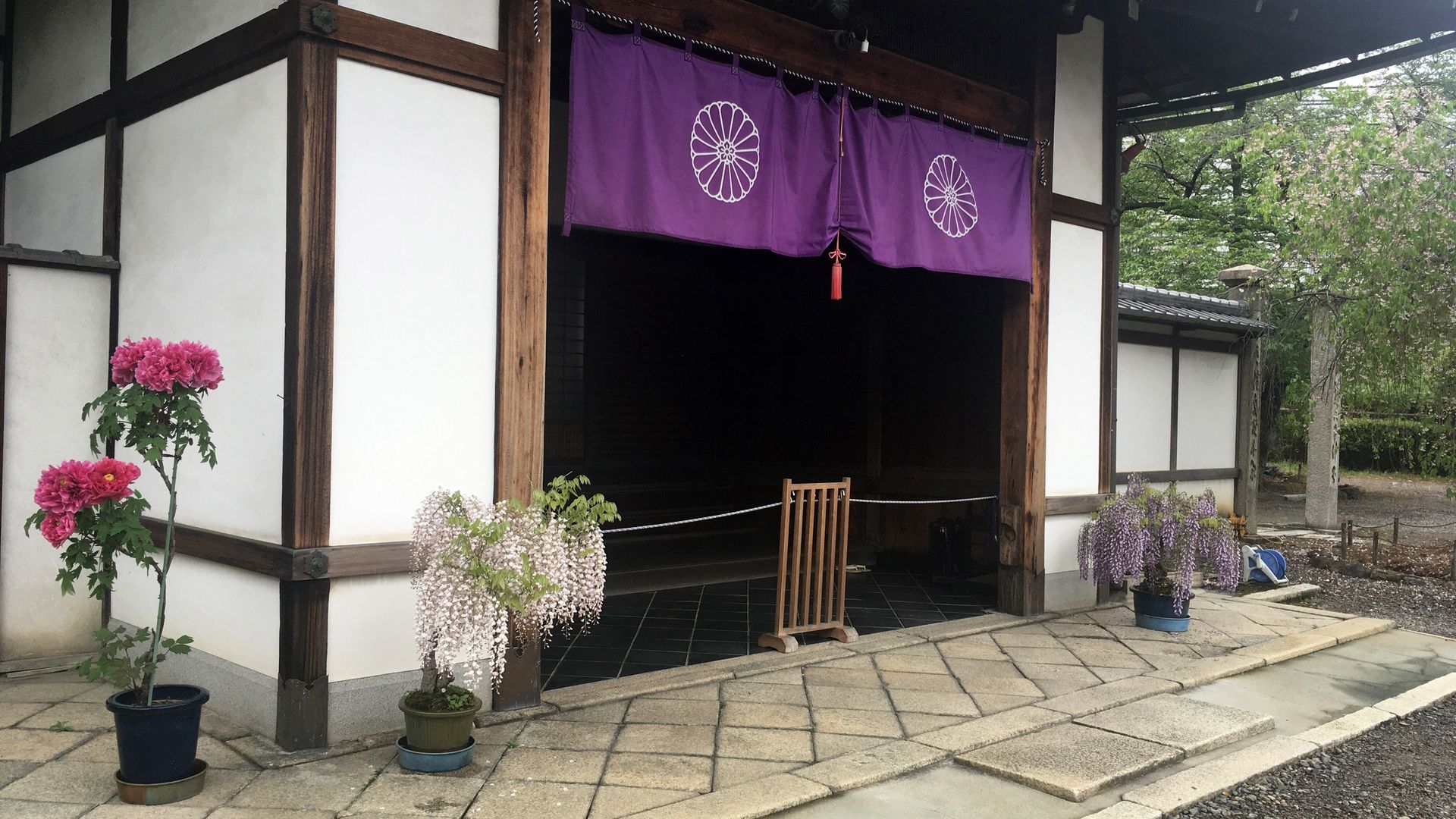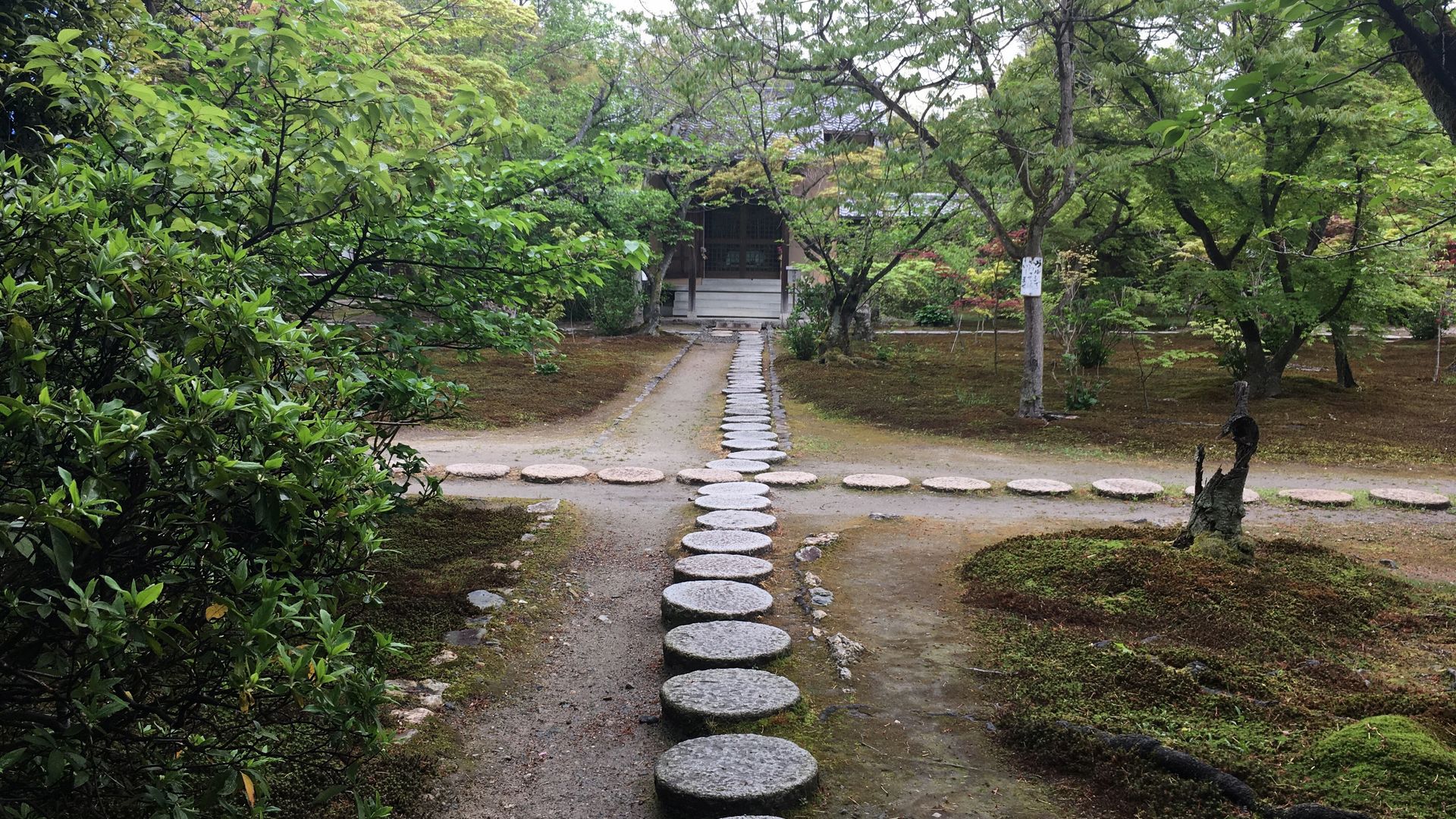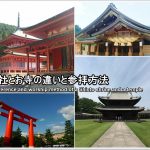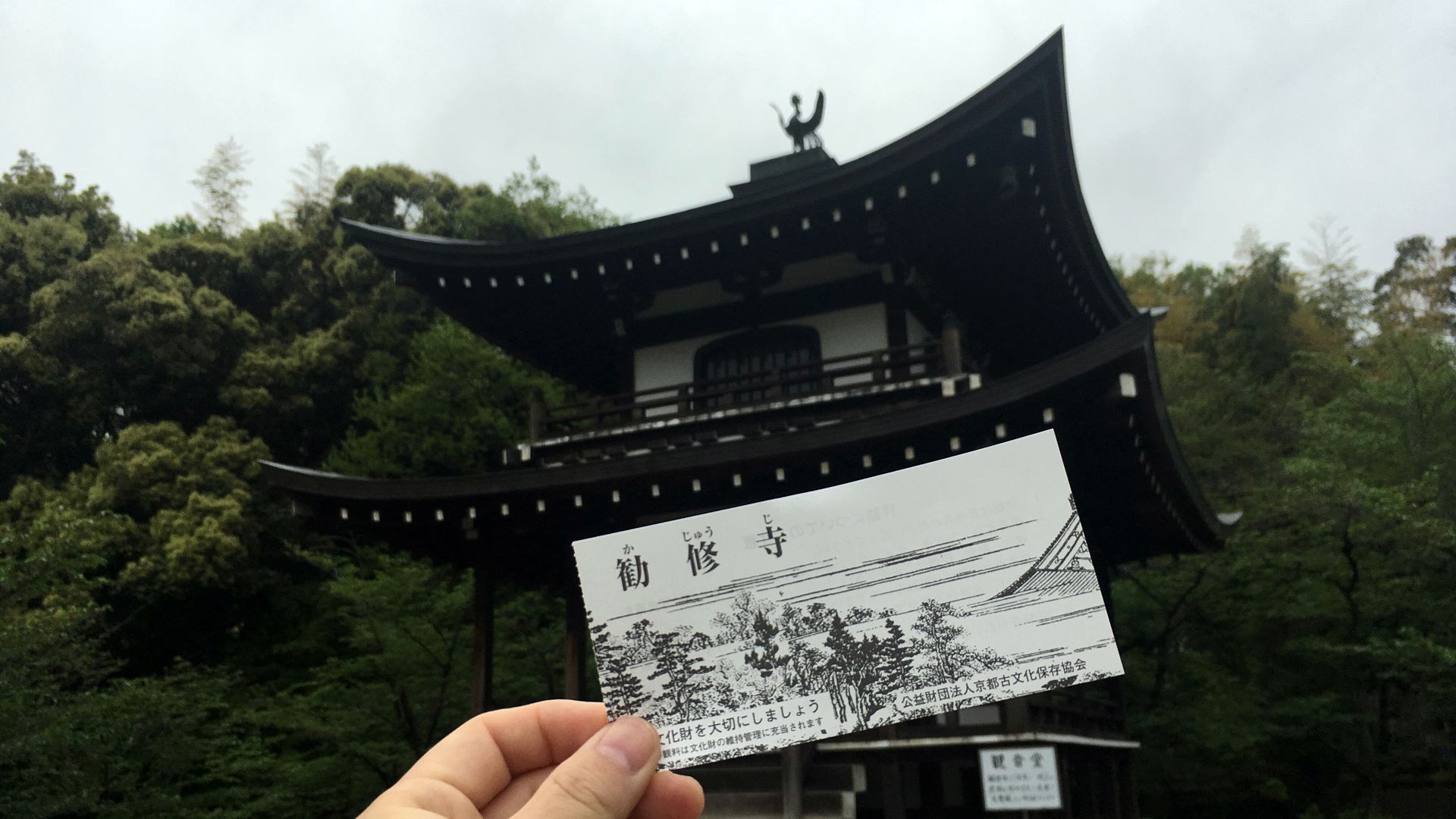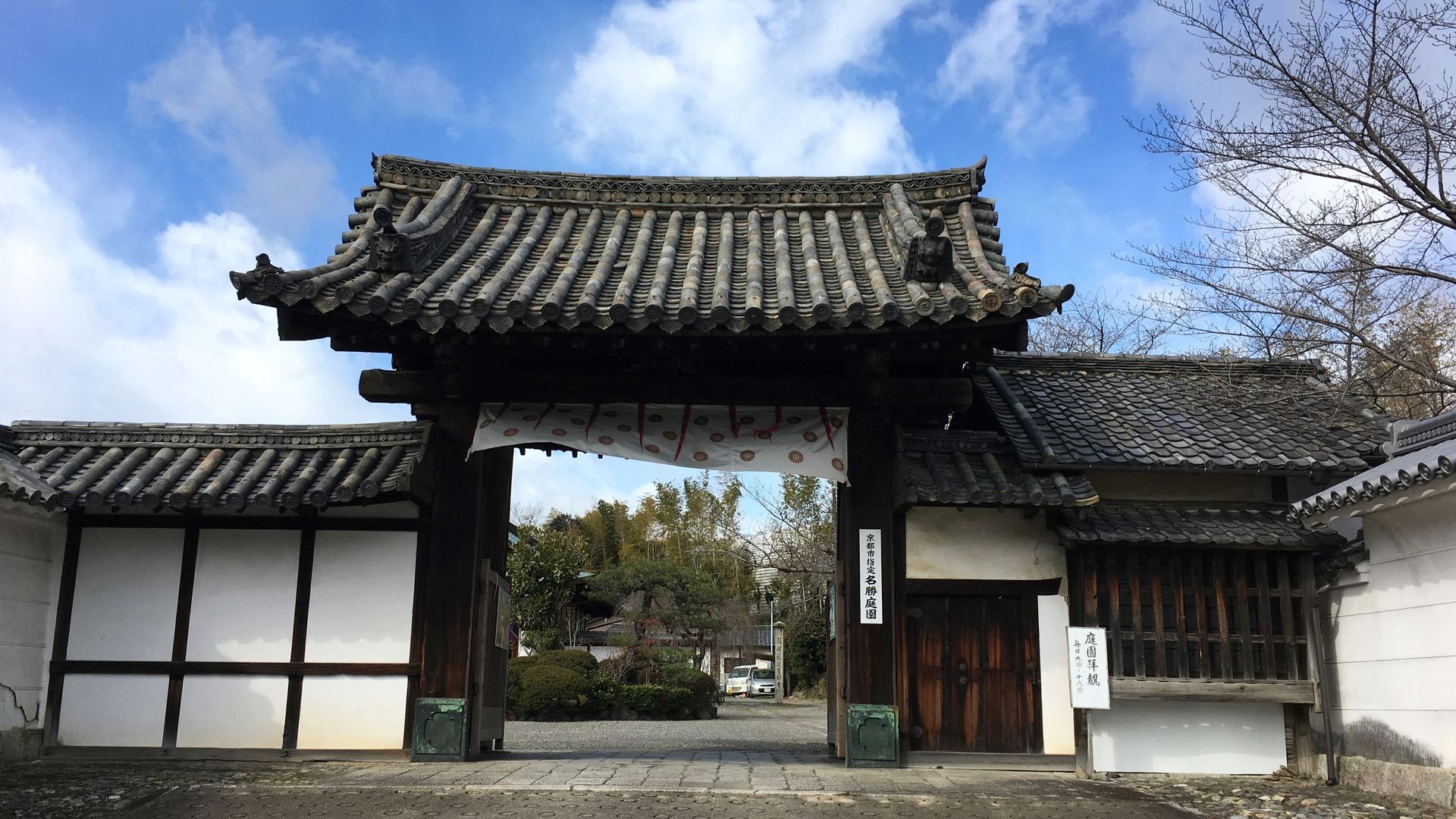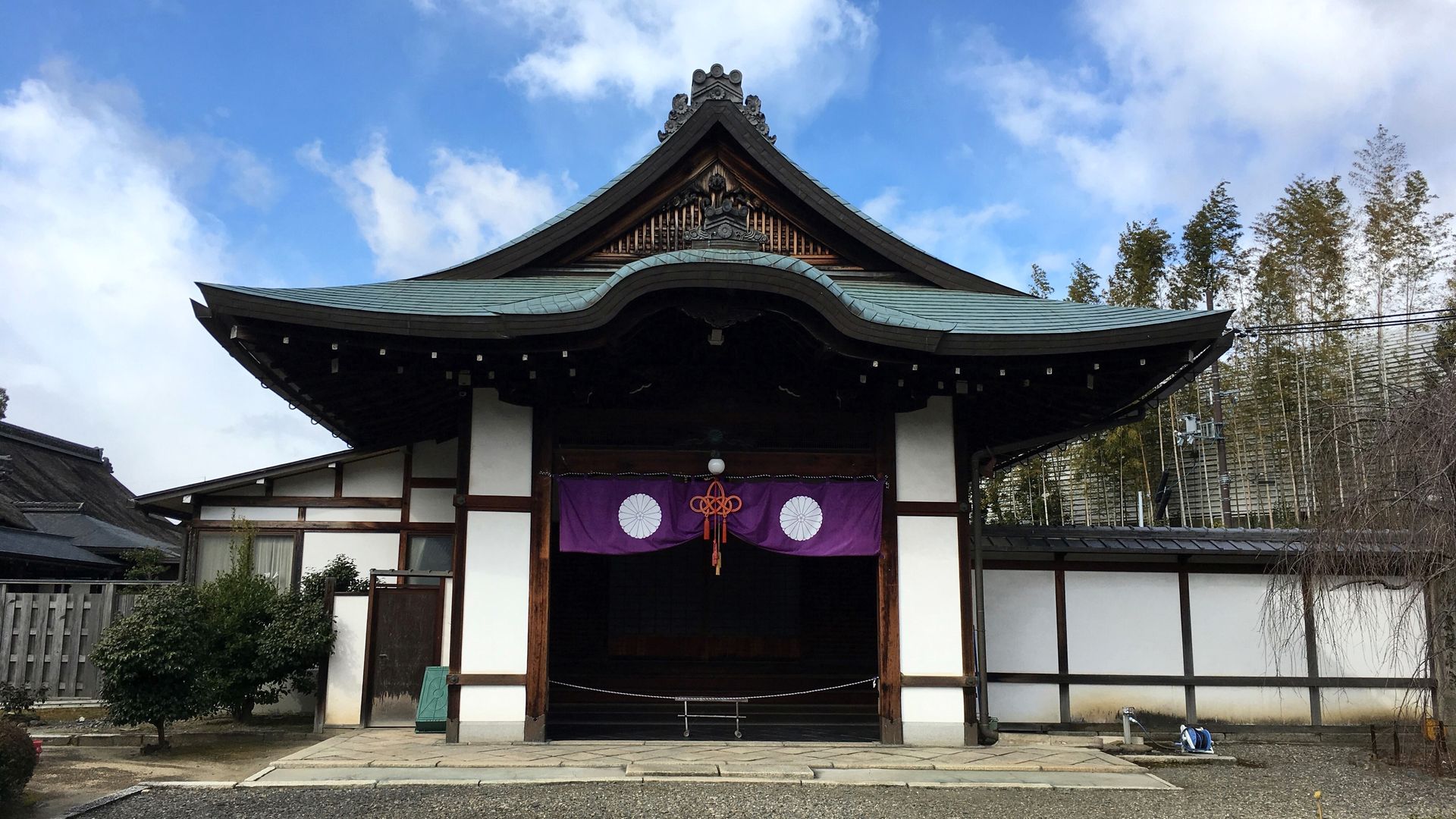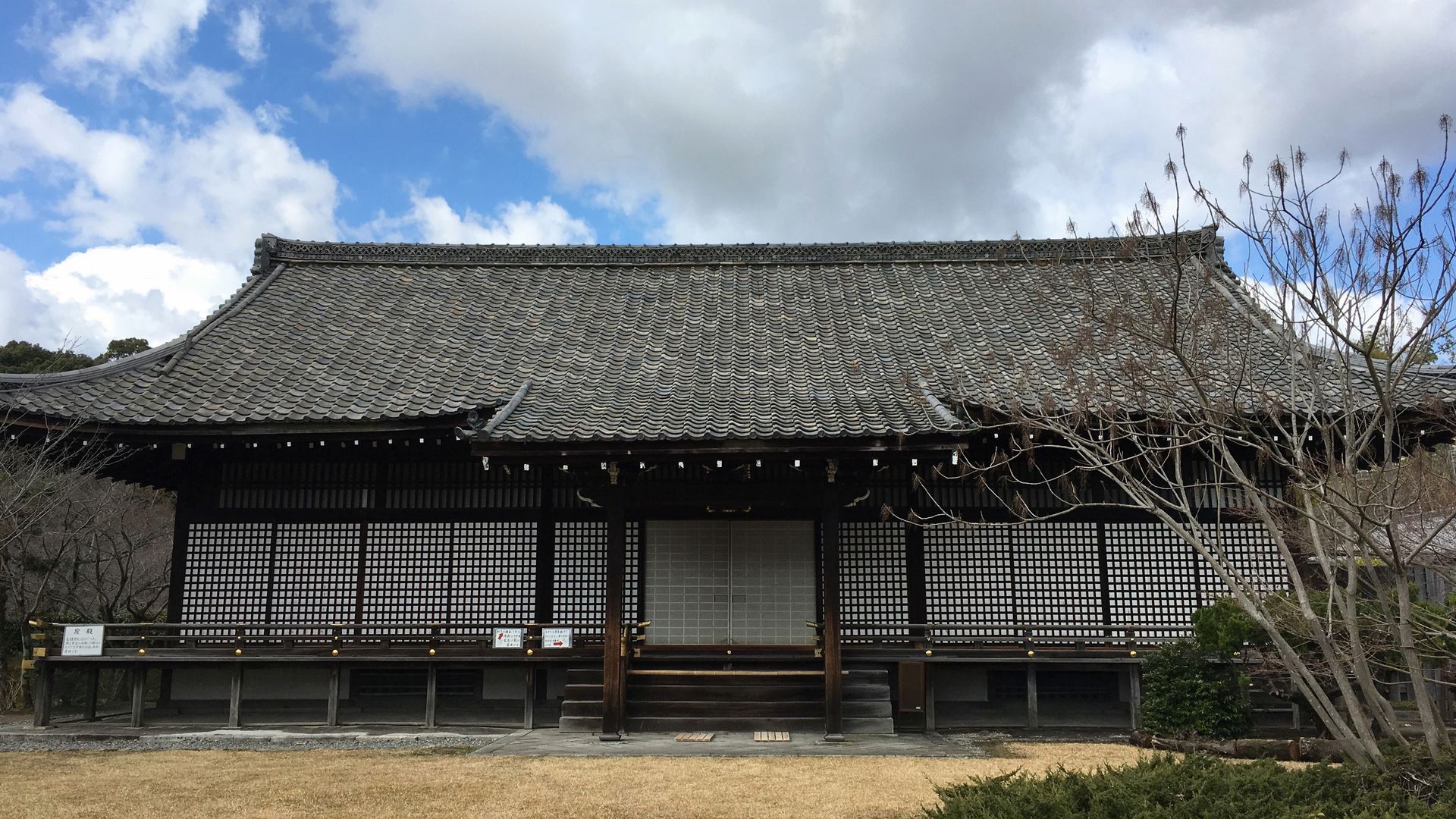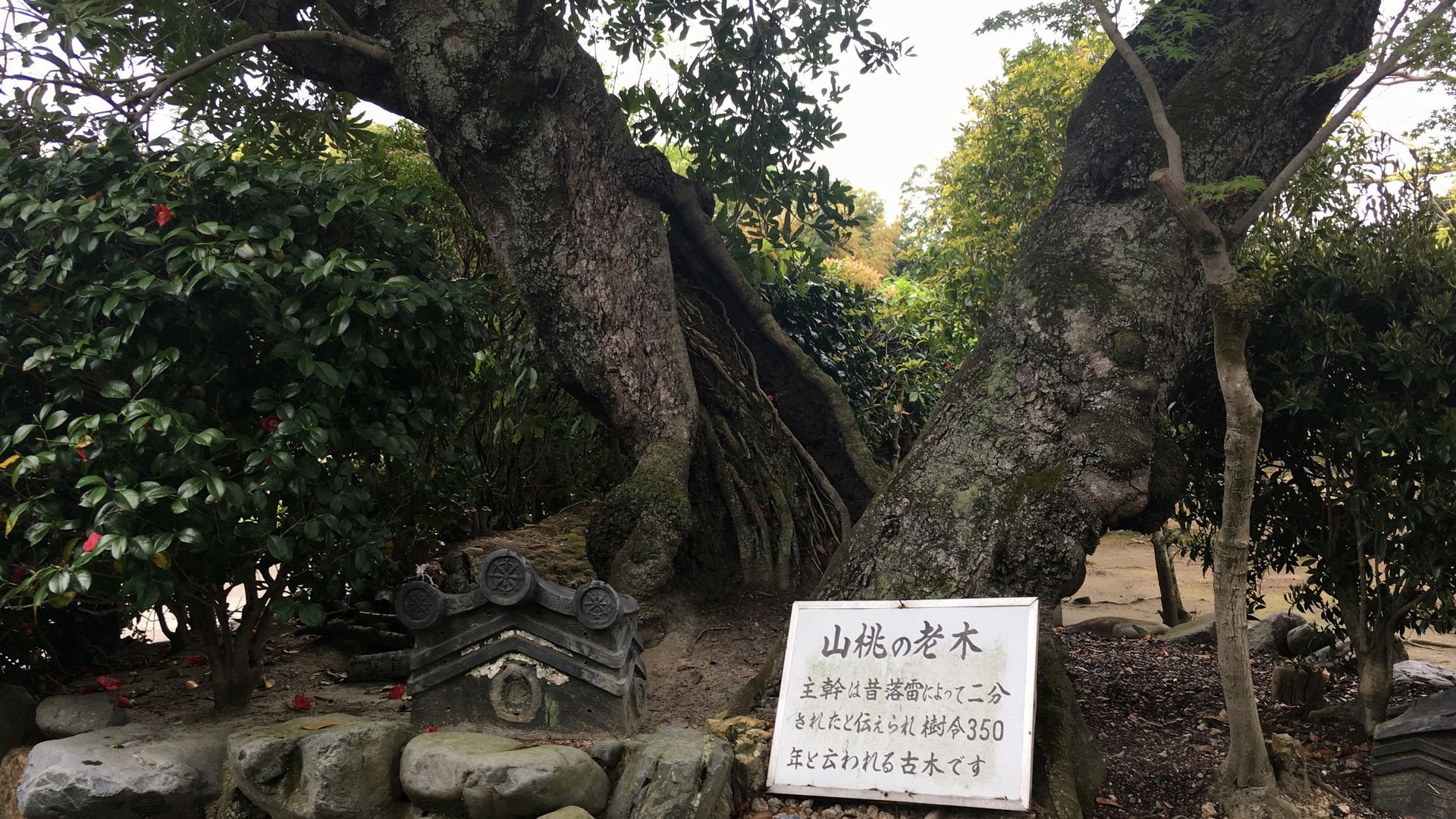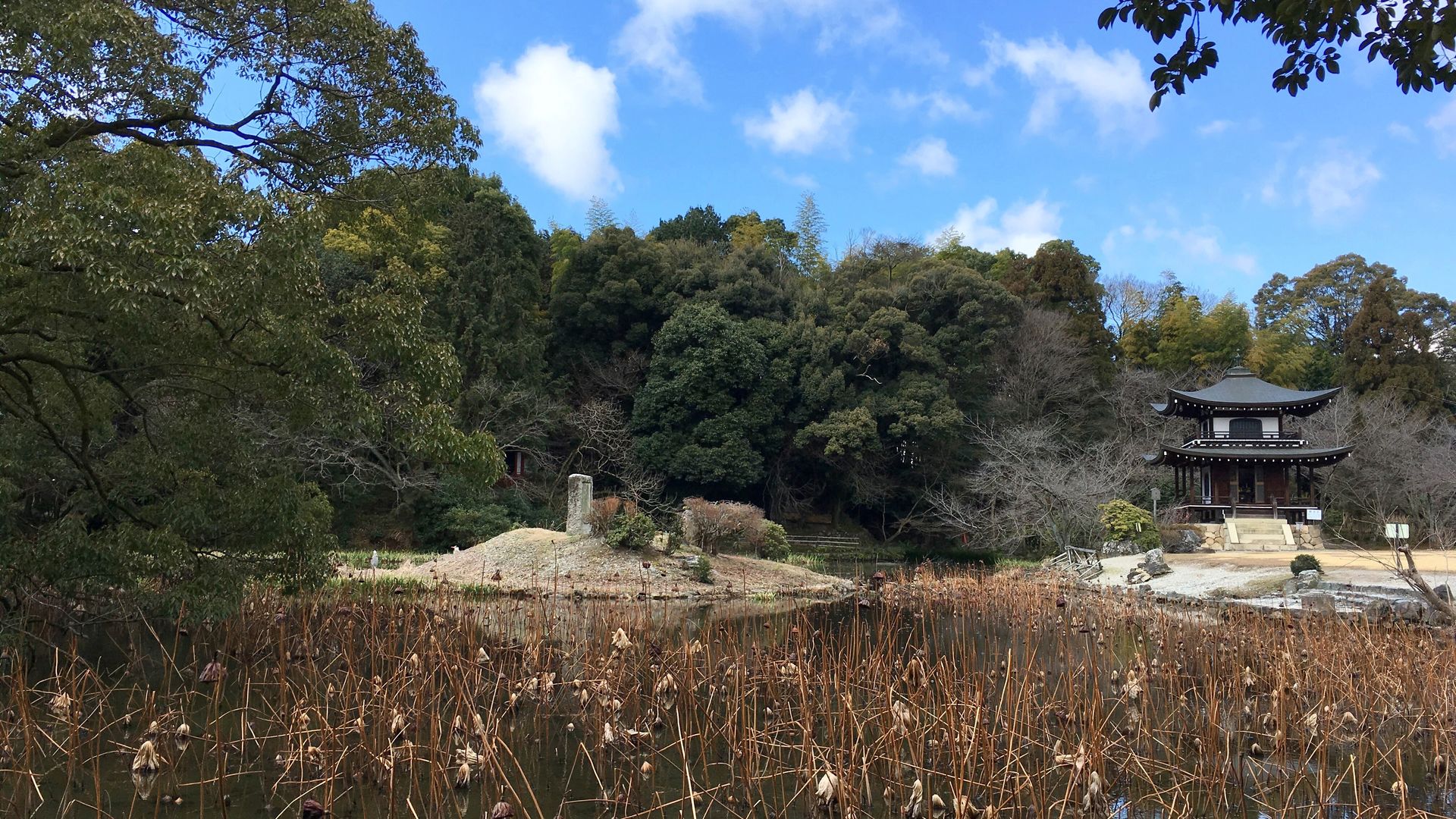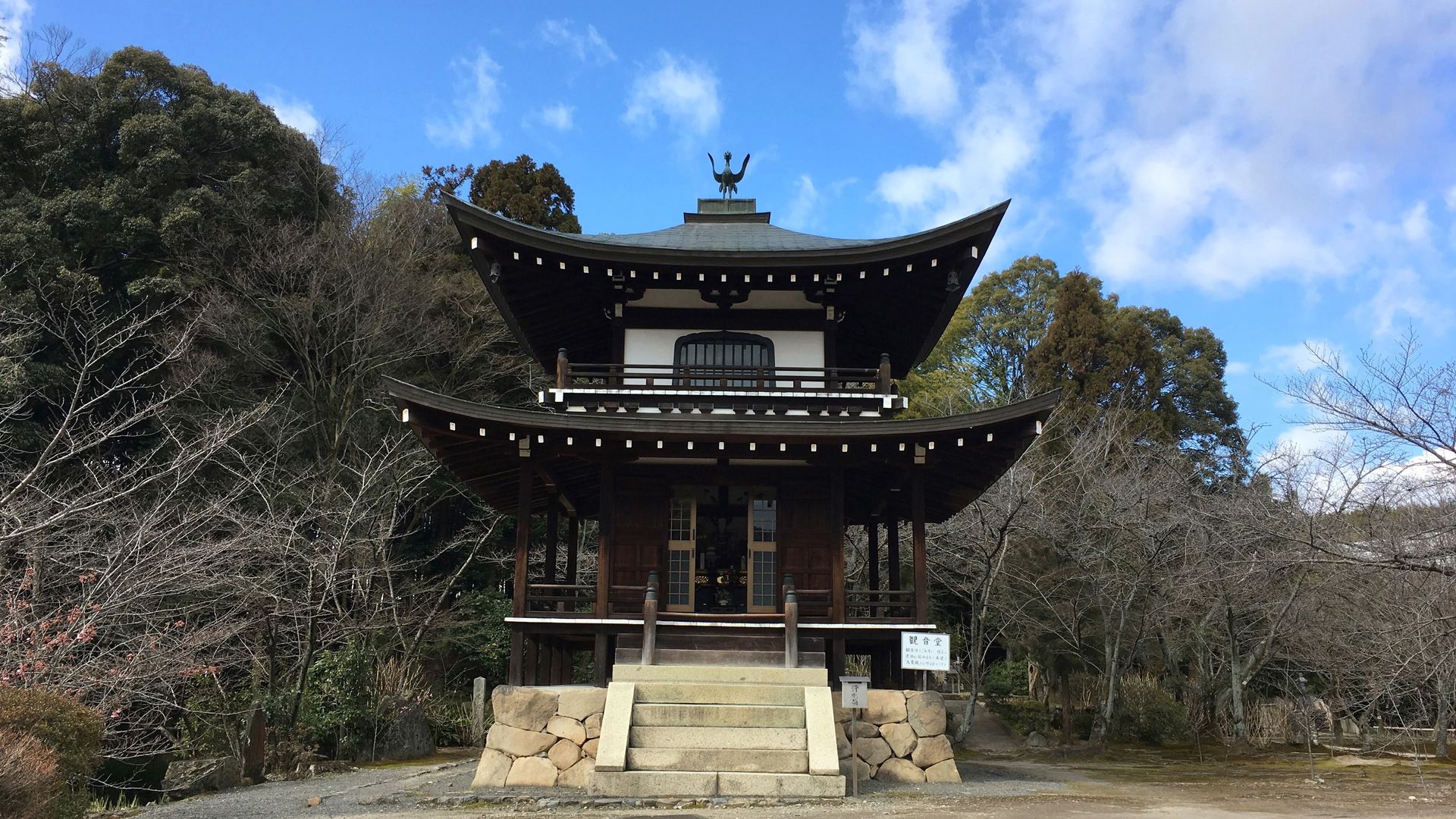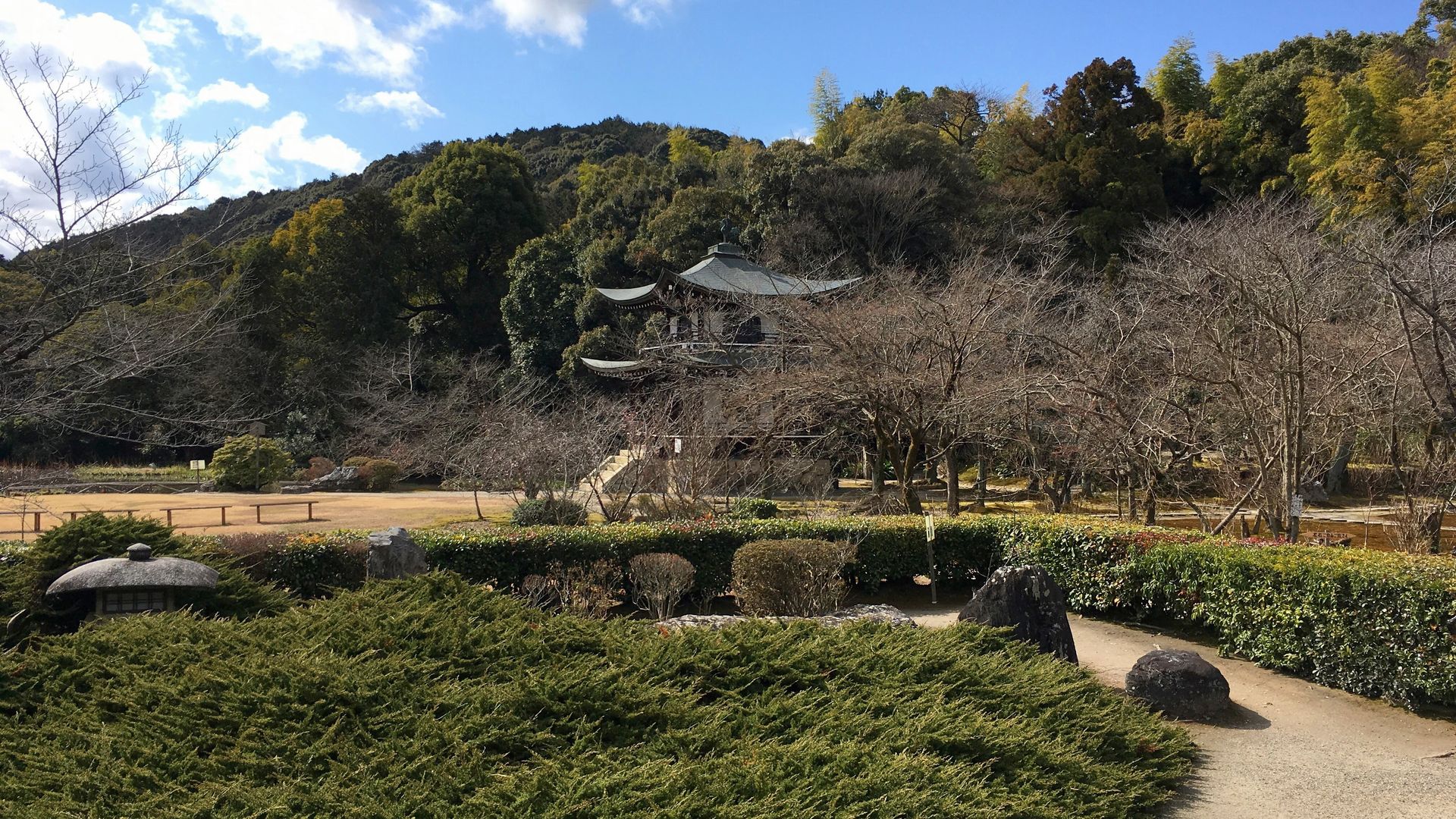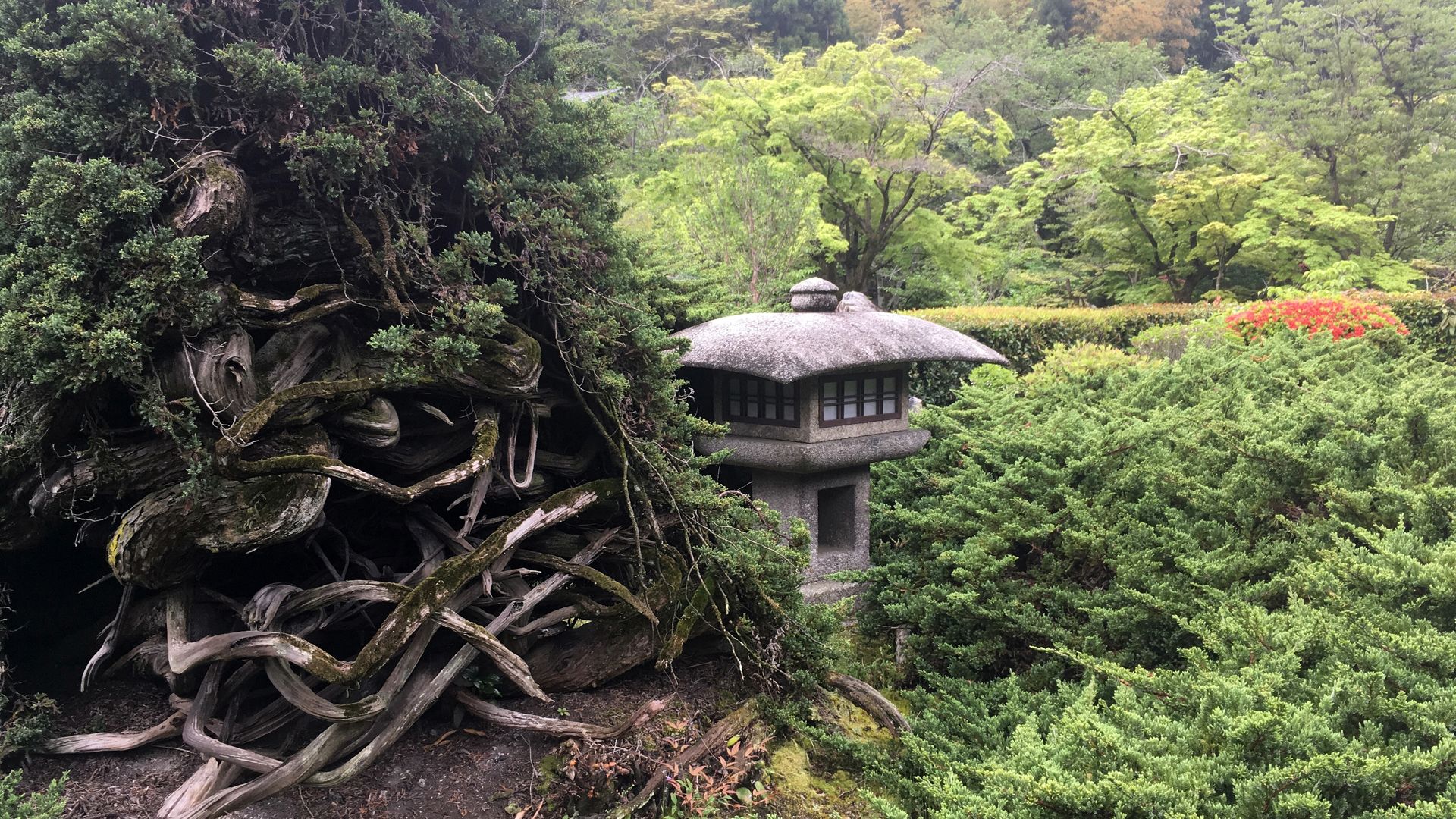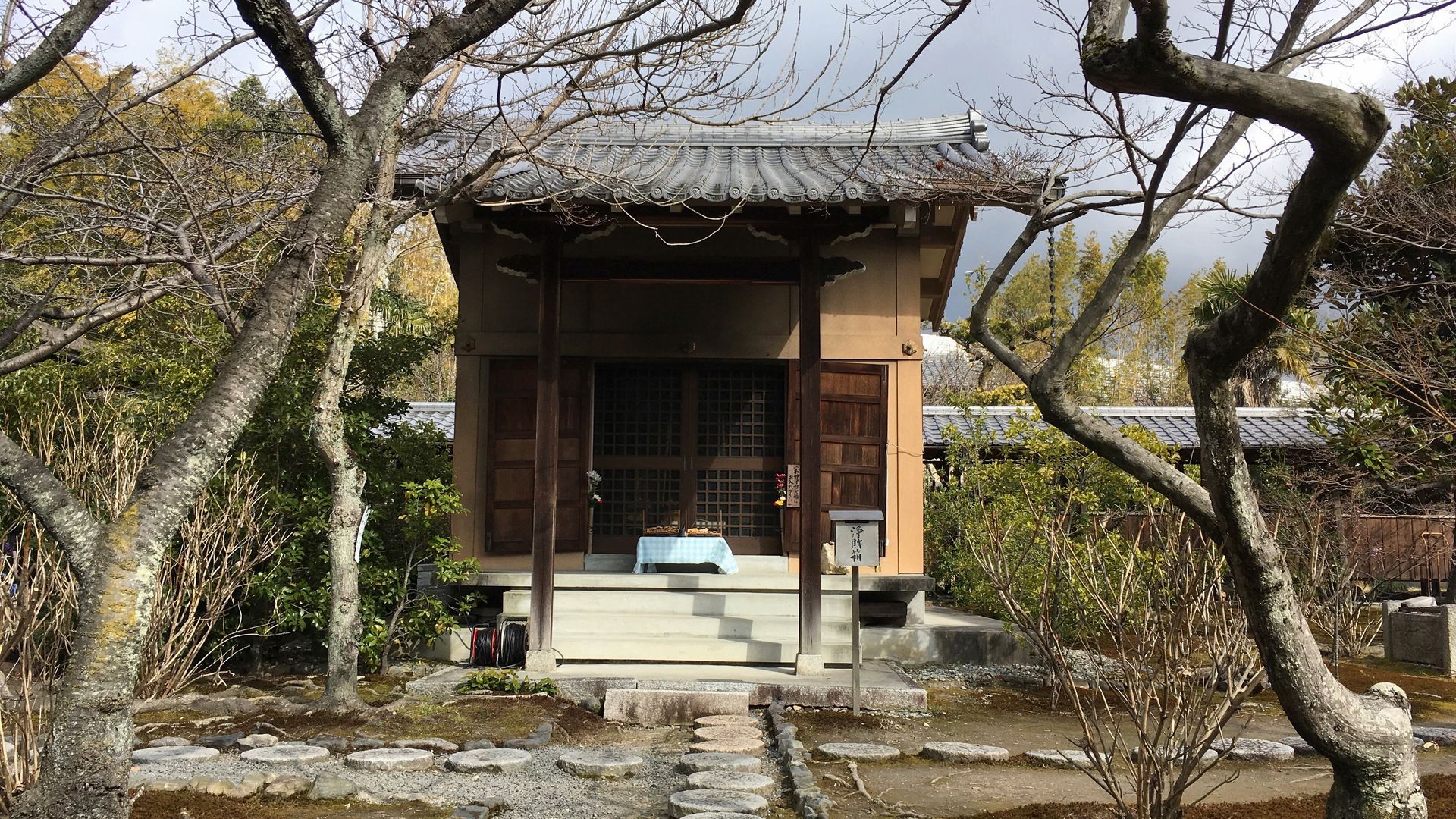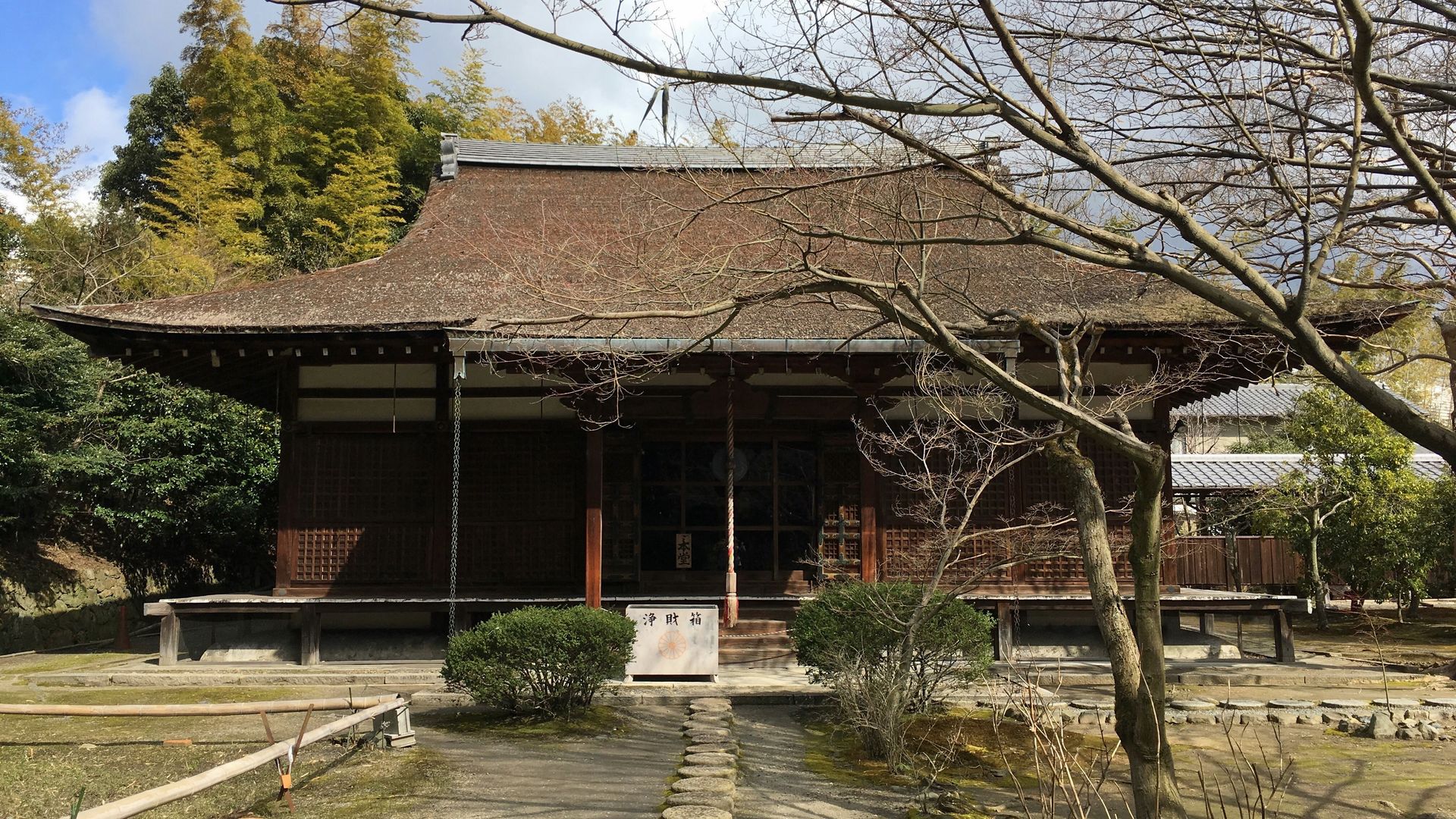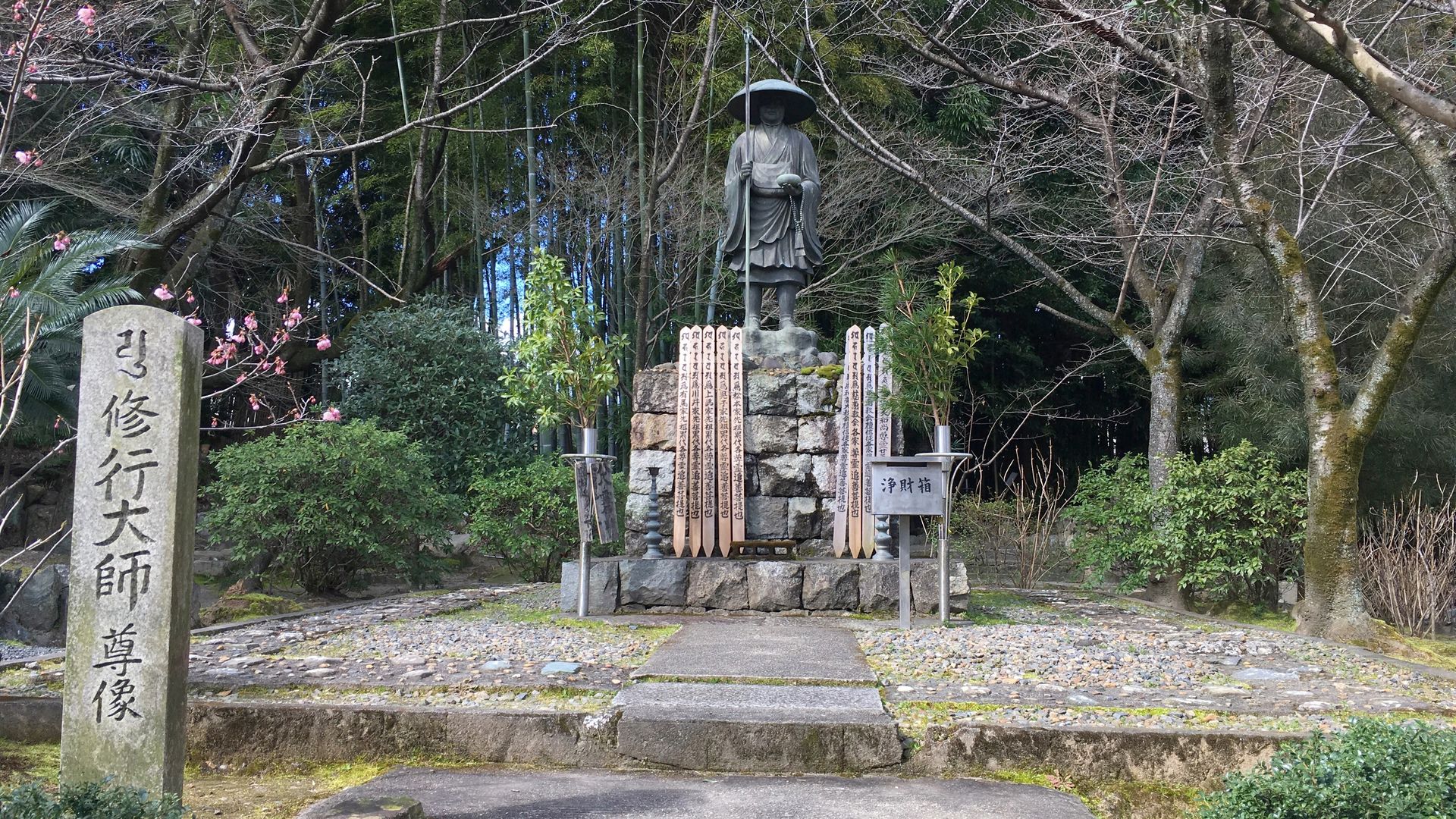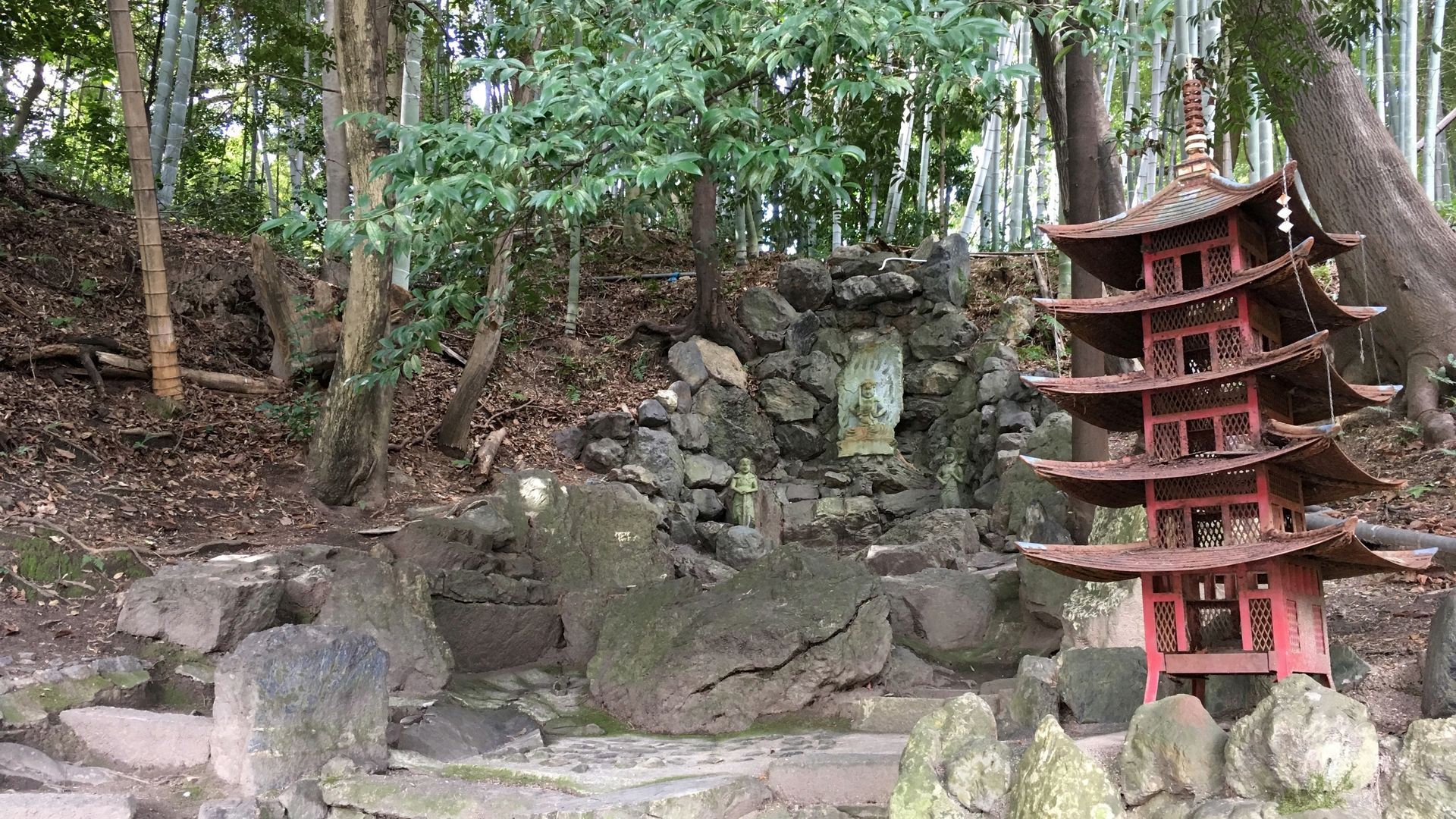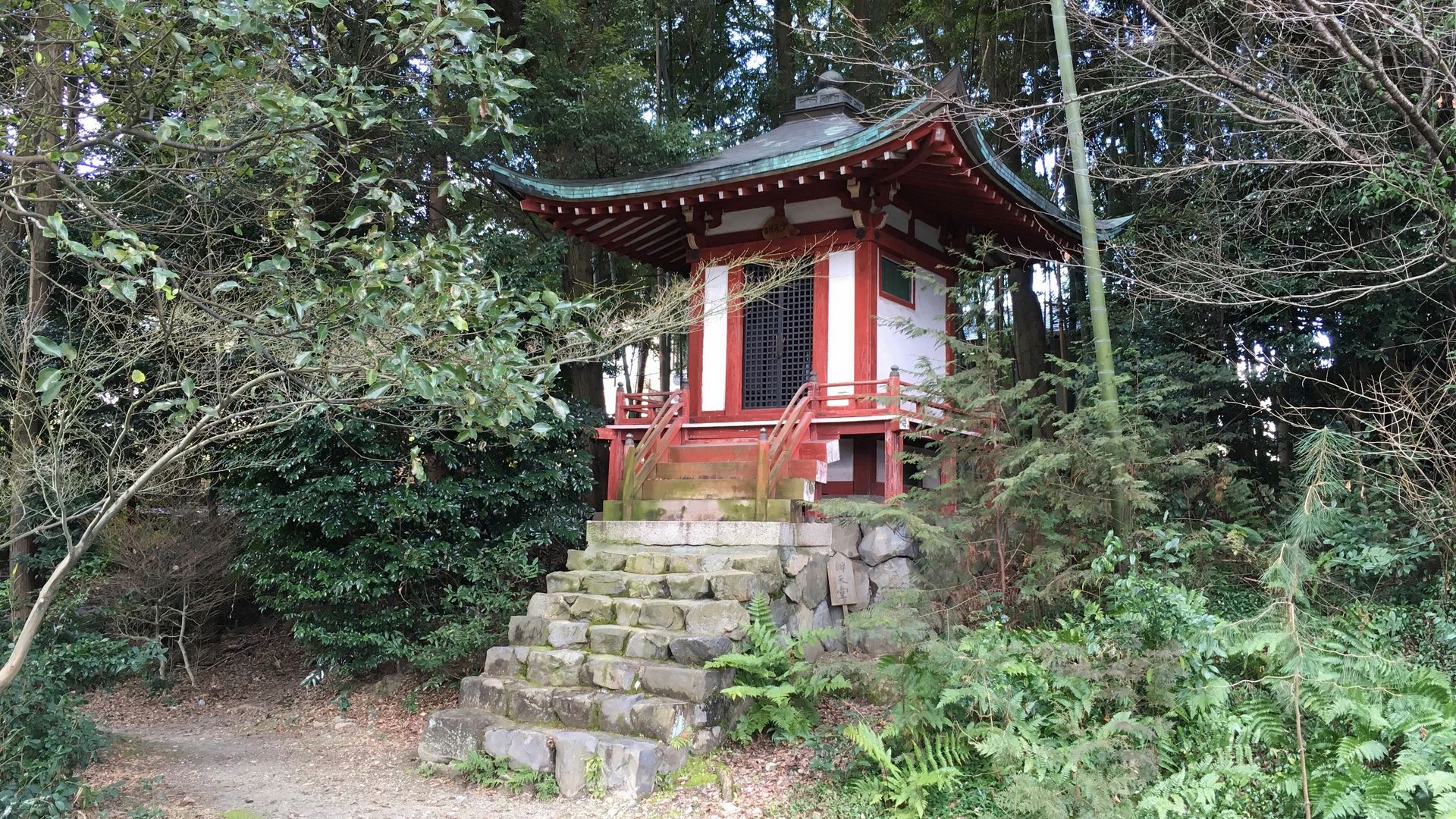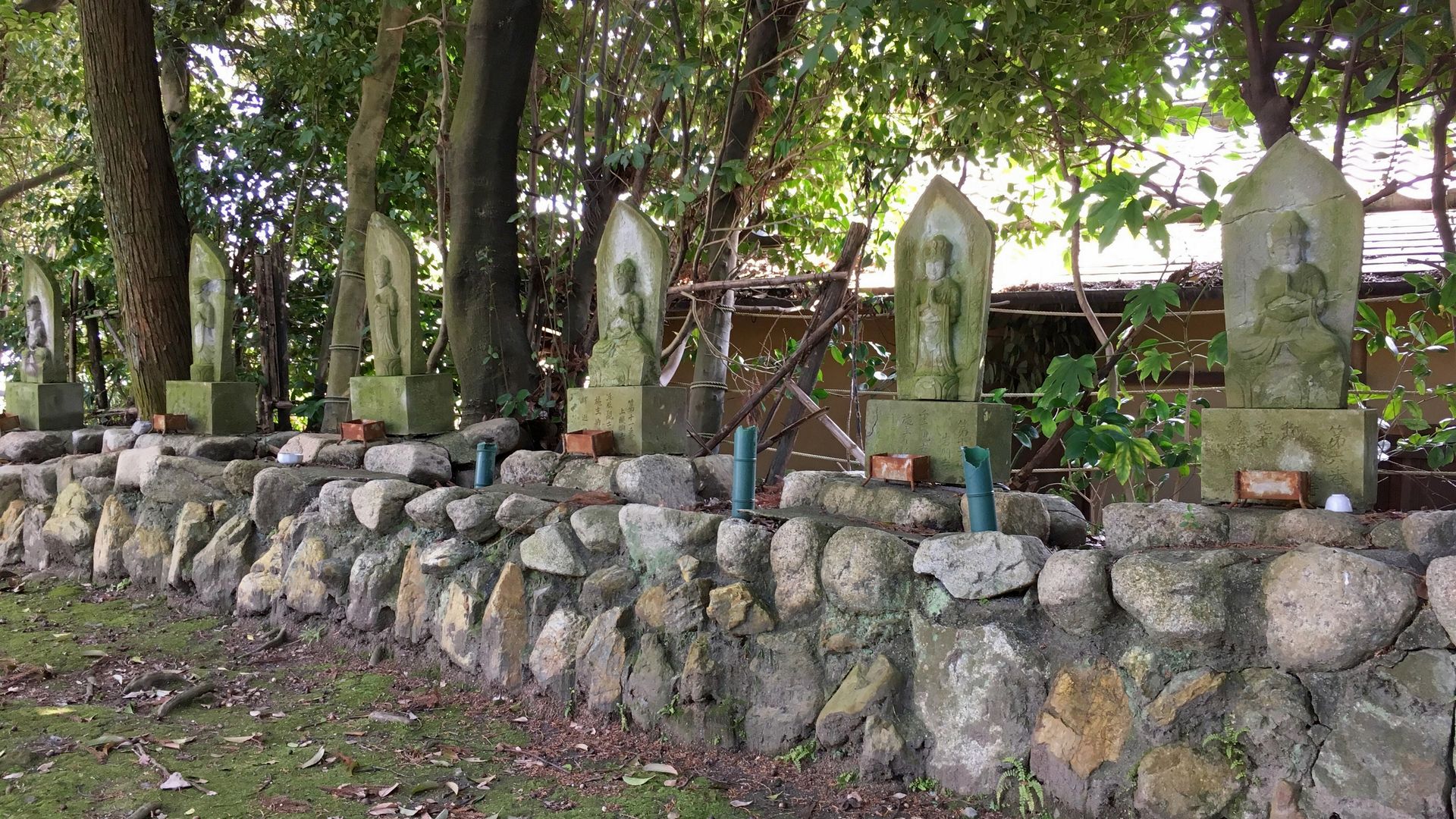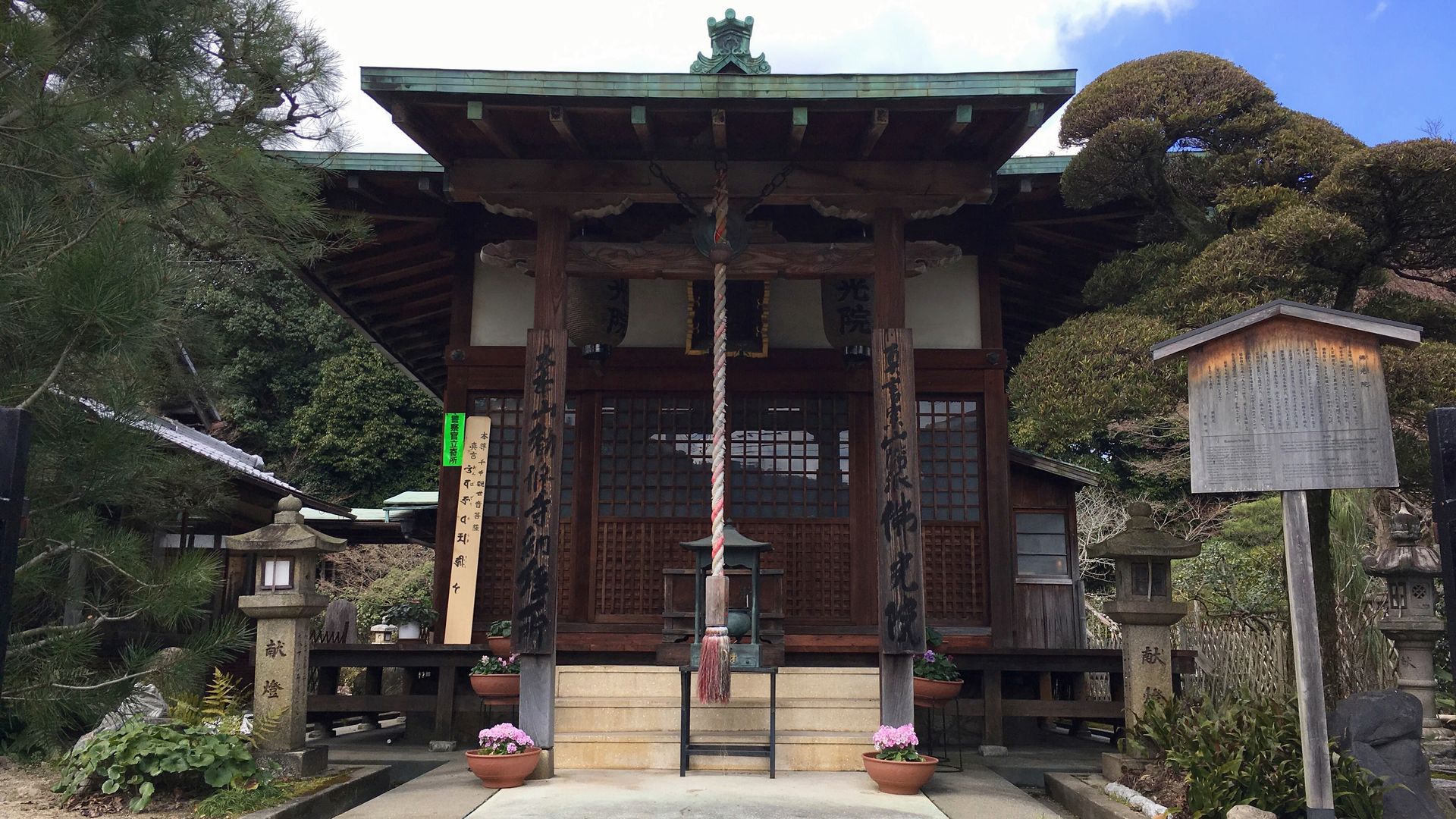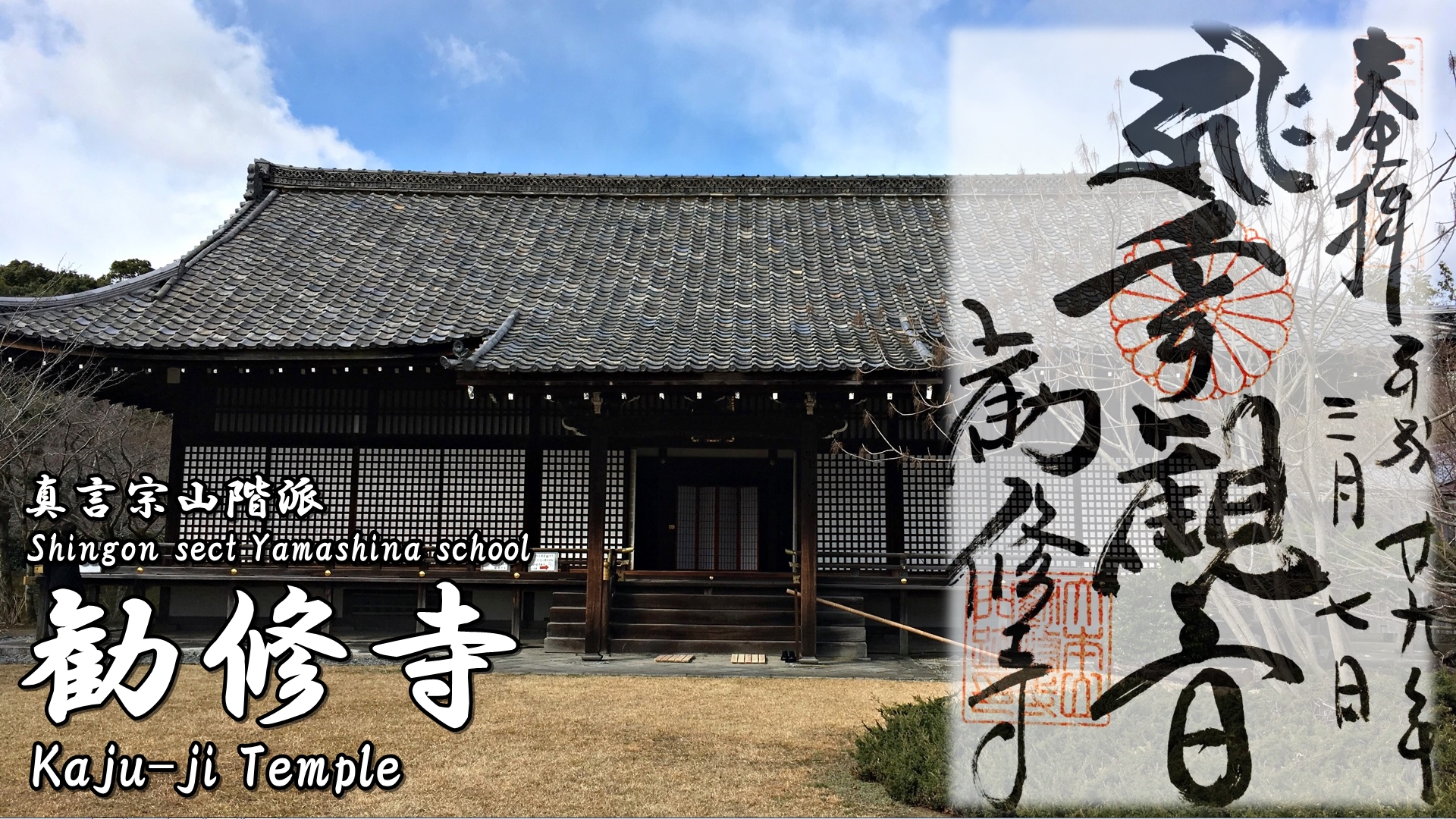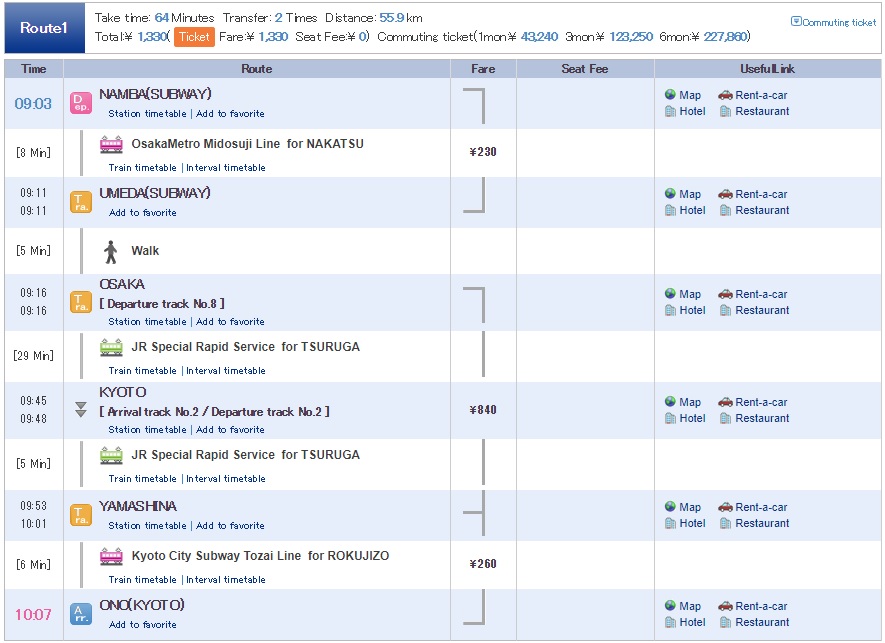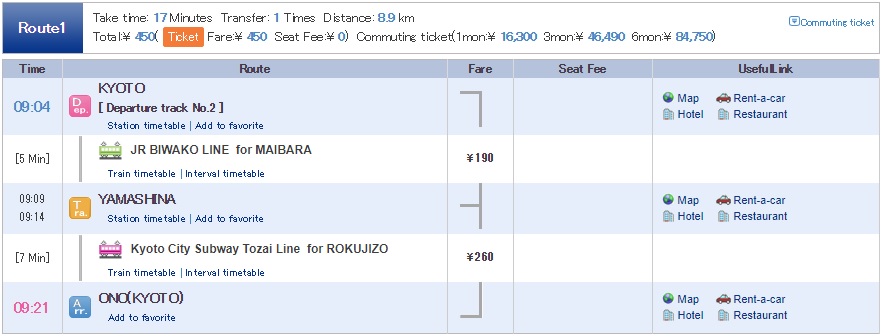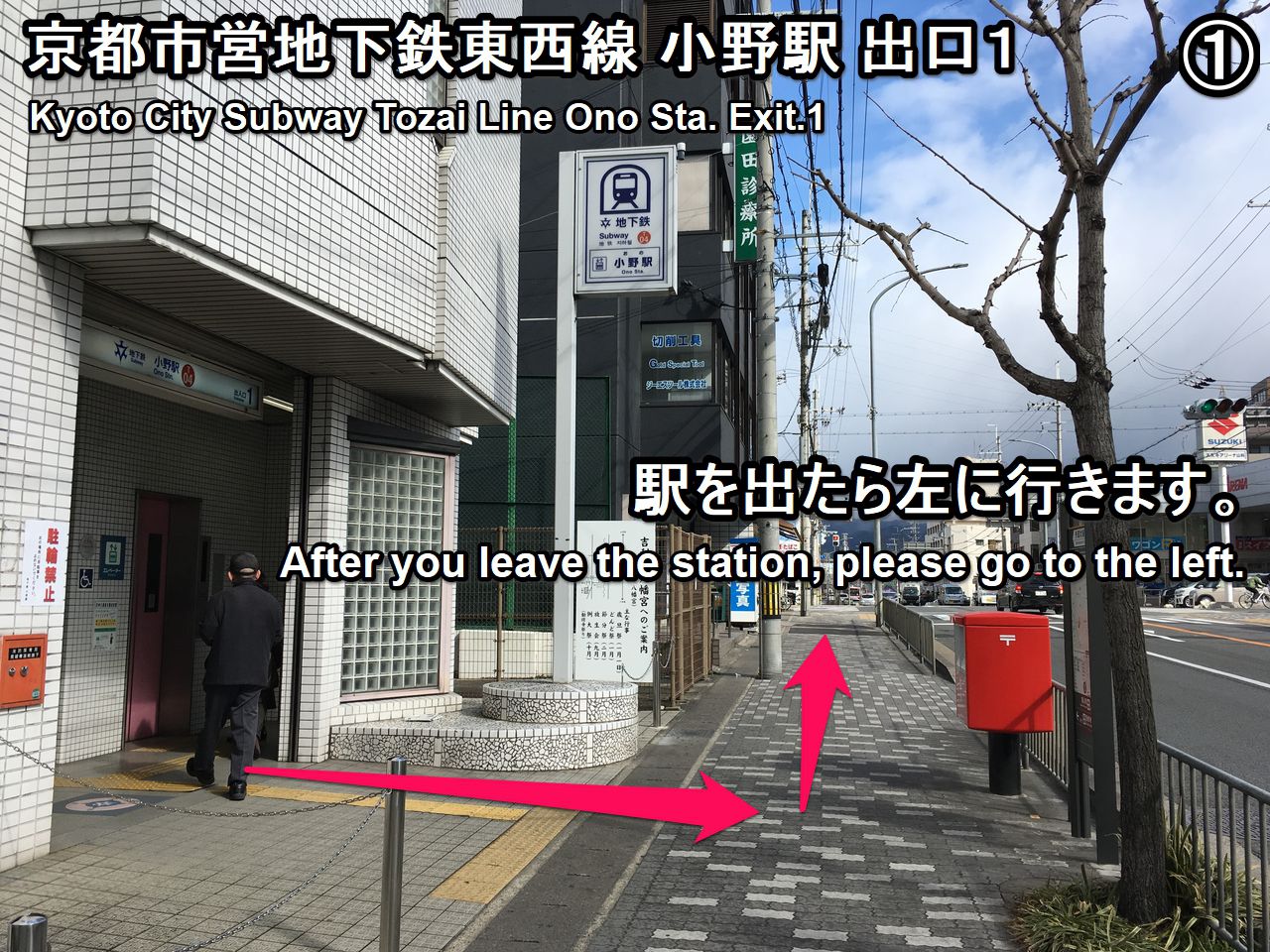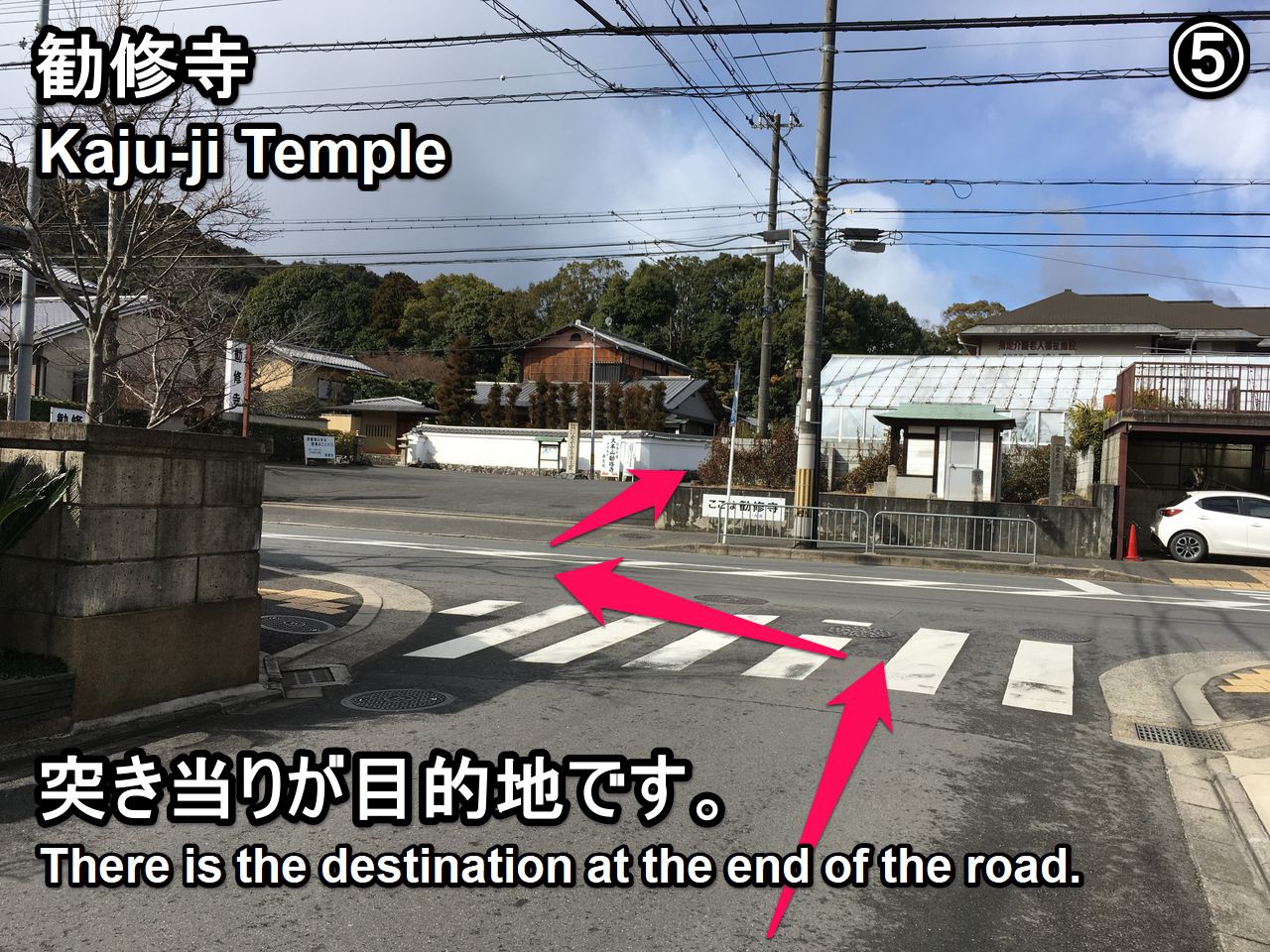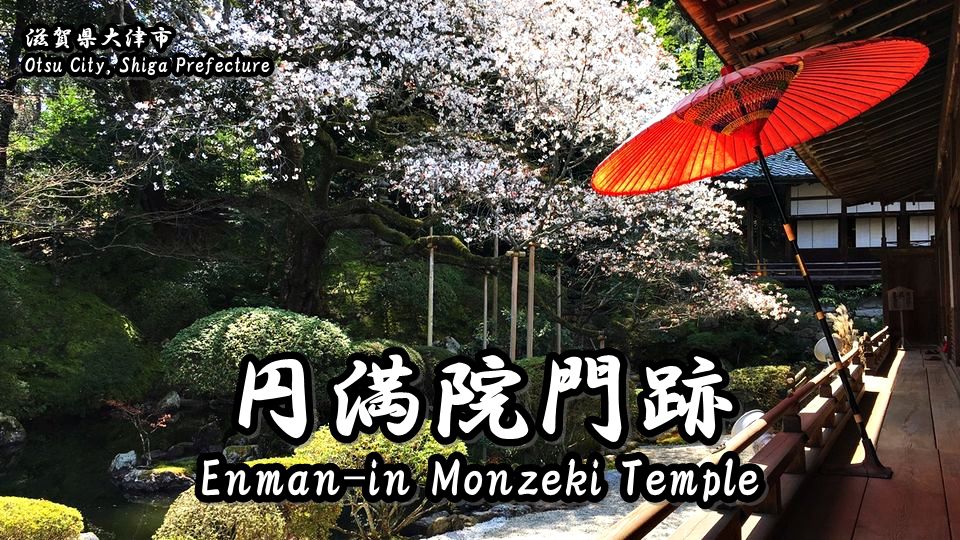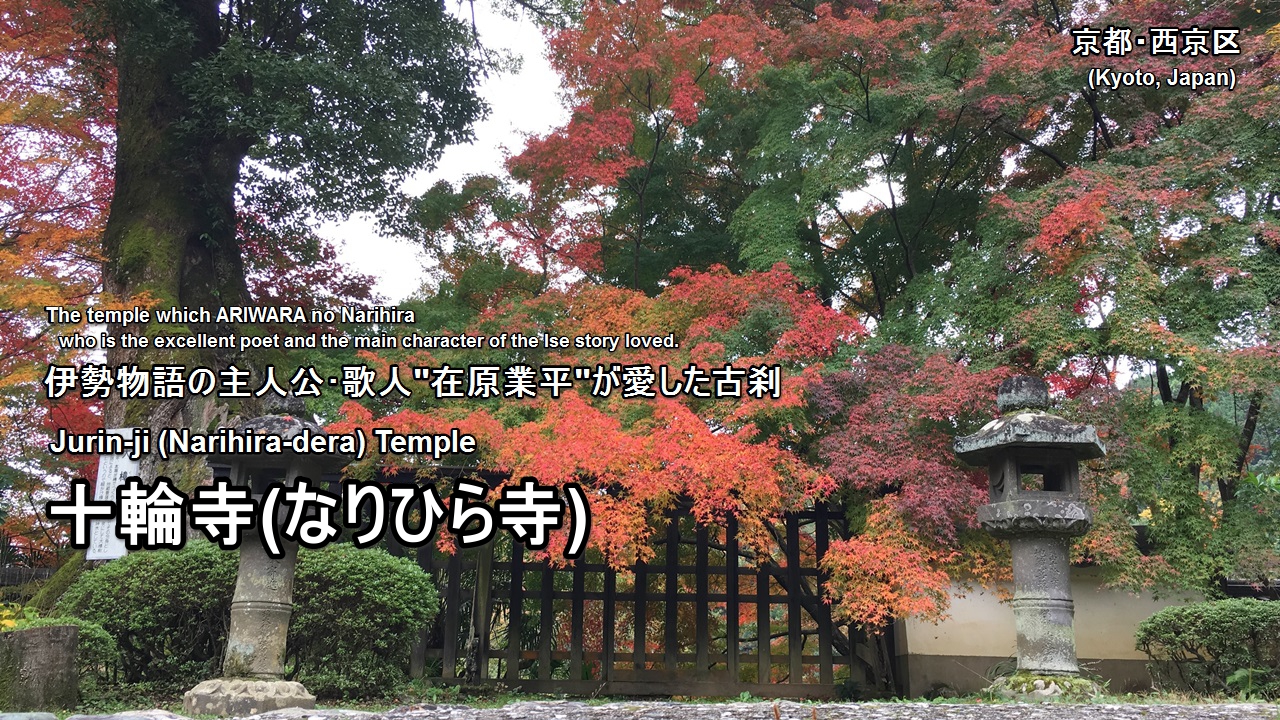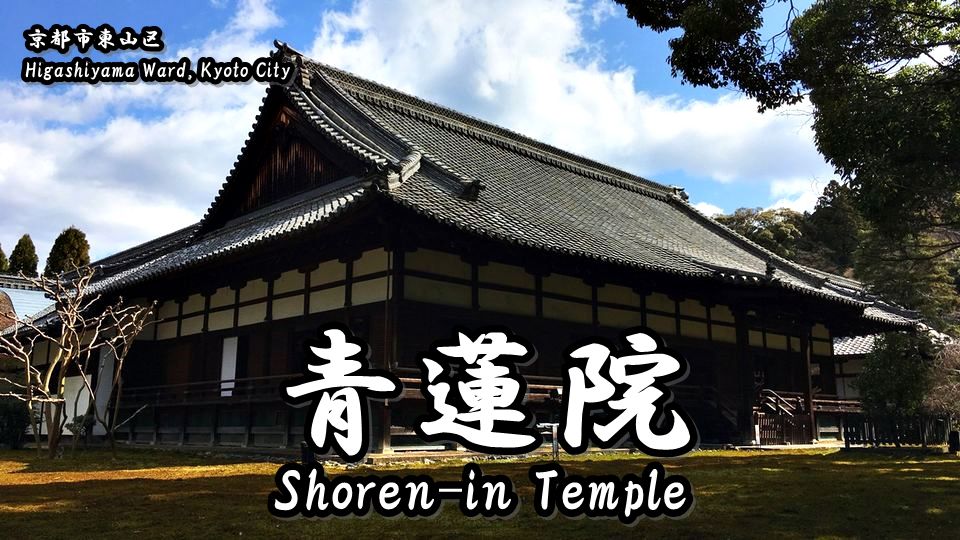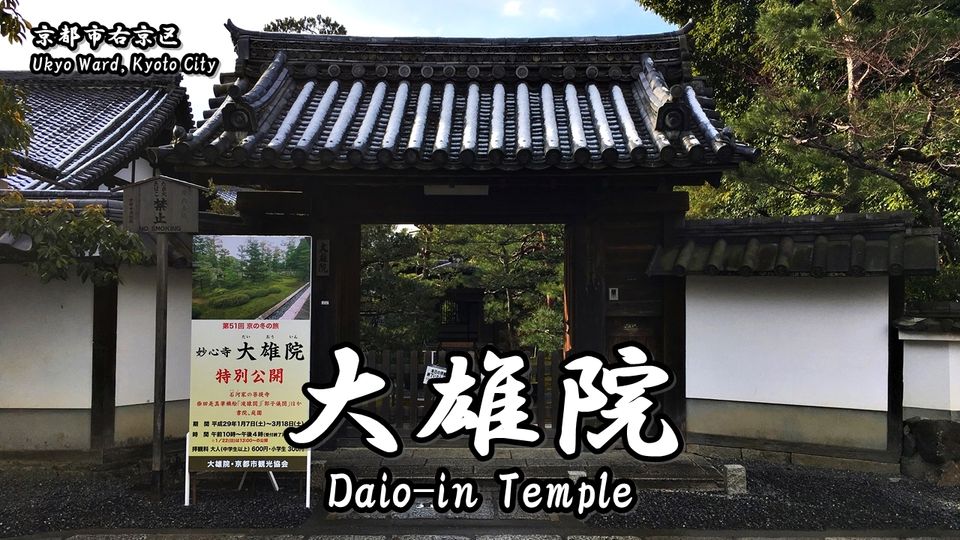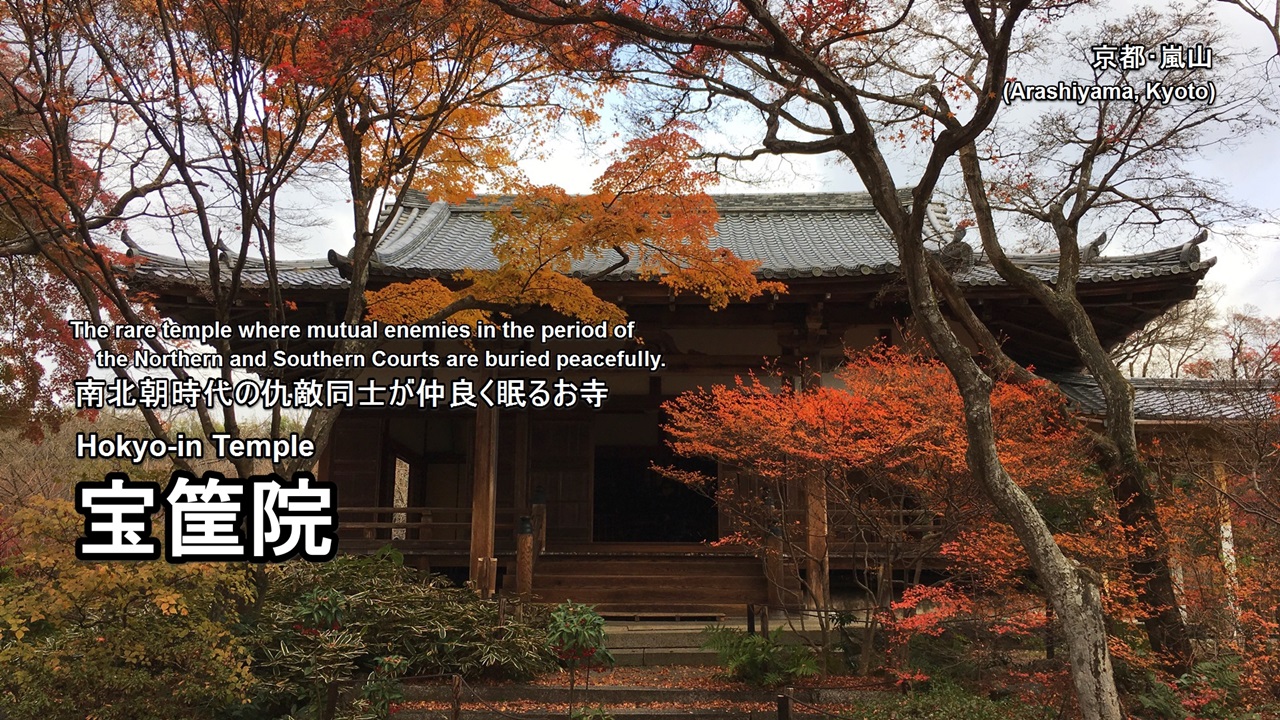Kaju-ji Temple is the Daihonzan (head temple) of the Yamashina School of the Shingon Sect located in Yamashina Ward, Kyoto City.
It was founded in 900 of the Heian period by Emperor Daigo to mourn his mother, FUJIWARA no Inshi, and is one of the Monzeki temple in which a prince lives as the chief priest.
Its honorific mountain prefix is Mt. Kikko (亀甲山) and the principal image is Senju Kannon (千手観音).
History of Kaju-ji
Let’s study the history of this temple with me.
I think that we can enjoy sightseeing of this temple more by learning the history of it. XD
Kaju-ji was founded in 900 of the Heian period by Emperor Daigo to mourn his mother, FUJIWARA no Inshi.
It had a deep connection to the Imperial family and the Fujiwara clan.
The temple crest is the Ura yaegiku (chrysanthemum) crest which is one of the chrysanthemum crest of the Imperial crest.
The temple was later destroyed by fire in 1470 during the Onin War, and was revbuilt in the Edo period using funds donated by Tokugawa Clan and the Imperial Family.
Shin-den hall of this temple was used as an elementary school in the Meiji period.
Information for visitors
Information
Address:27-6, Kanshuji Niodocho, Kyoto Shi Yamashina Ku, Kyoto Fu, 607-8226, Japan
Phone:+81-75-571-0048
Foundation:900
Founder:Emperor Daigo (醍醐天皇)
Sect:Yamashina School of the Shingon Sect (真言宗山階派)
Principal image:Senju Kannon (千手観音)
Open
9:00~16:00
Admission Fee
400 yen (Adults)
200 yen (Children)
Other Informations
Inside the building, there are places where photography is prohibited. (Please follow the official’s instructions.)
The worship method of a shinto shrine and a buddhist temple, please refer to the following article.
Next, let’s go to see the highlights of this temple with me!
Highlights of Kaju-ji
- 山門:San-mon gate
- 玄関/庫裏:Genkan / Kuri
- 宸殿*:Shin-den hall*
- 山桃の老木*:The old myricales tree*
- 氷池園*:Hyochi-en garden*
- 観音堂*:Kannon-do hall*
- 書院【重要文化財】*:Sho-in hall【Important cultural property】*
- 書院前庭*:Front garden of the Sho-in
- 五大堂*:Godai-do hall*
- 本堂*:Hon-do hall*
- 修行大師尊像*:Statue of the Shugyo-Daishi*
- 翠微瀑*:Suibibaku*
- 弁天堂*:Benten-do hall*
- 仏光院 :Bukko-in Temple
This mark 「*」 is a pay area.
山門:San-mon gate
玄関/庫裏:Genkan / Kuri
宸殿*:Shin-den hall*
Shin-den hall is the former residence of Emperor Meisho (明正天皇) that was granted to the temple in 1697 of the Edo period.
山桃の老木*:The old myricales tree*
This old tree was broken into two parts by the lightning in the old days.
氷池園*:Hyochi-en garden*
It is a chisen-kaiyushiki garden, Japanese style garden with a path around a central pond, designated as the places of scenic beauty of Kyoto City.
This garden is called ‘Hyochi-en.’
観音堂*:Kannon-do hall*
Kannon-do hall was built in the early Showa period, and it is also called ‘Daihi-kaku (大悲閣)’, a multi-storied building.
書院【重要文化財】*:Sho-in hall【Important cultural property】*
Sho-in hall is the former residence of Emperor Gosai (後西天皇) that was granted to the temple in 1686 of the Edo period.
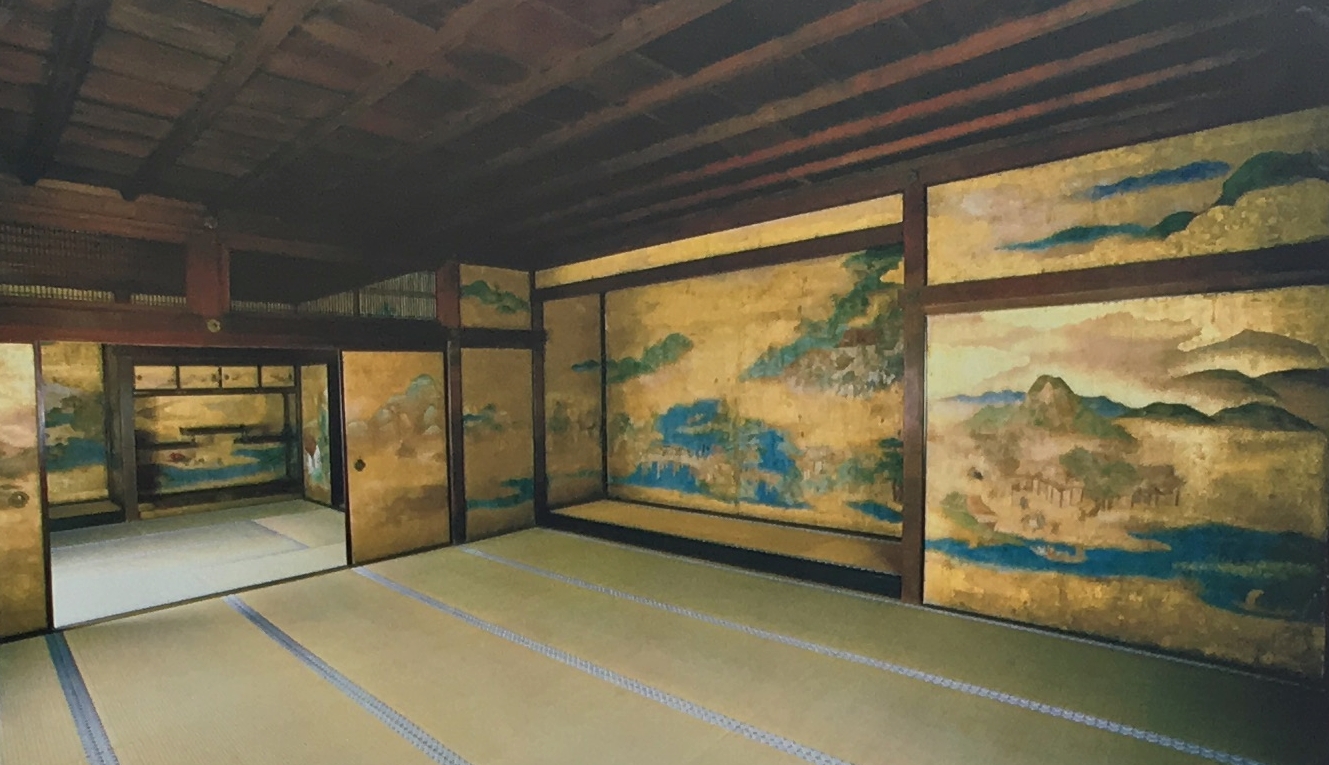
There is a fusuma picture made by Mitsuoki /Mitsunari TOSA who was one of the most popular painter of the Edo period in this building.
書院前庭*:Front garden of the Sho-in
The juniper tree of this garden is over 750 years old, one of the largest juniper trees in Japan.
The stone lantern of the garden is said to have been donated by Mitsukuni TOKUGAWA and is known as ‘Kaju-ji style lantern.’
五大堂*:Godai-do hall*
“Angry buddhist saints” such as Fudo Myoo (Acala) are enshrined in the Godai-do hall.
本堂*:Hon-do hall*
Hon-do hall is the former residence of Emperor Reigen (霊元天皇) that was granted to the temple in 1686 of the Edo period.
Senju Kannon (Thousand-armed Kannon) which is the principal image (honzon) of this temple is enshrined in the building.
修行大師尊像*:Statue of the Shugyo-Daishi*
翠微瀑*:Suibibaku*
弁天堂*:Benten-do hall*
The Sarasvati who is also known as Benzai-ten, one of the seven gods of happiness, is enshrined in this building.
仏光院 :Bukko-in Temple
Bukko-in is one of the sub-temple of the Kaju-ji which was rebuilt in 1951 of the Showa period.
We can get the Goshuin (red ink stamp) here.
Video of Kaju-ji
Photo of Kaju-ji
Goshuin (Red ink stamps) of Kaju-ji
Kaju-ji’s red ink stamp (goshuin) , ‘Senju Kannon (千手観音)’, the principal image of this temple.
Kaju-ji’s red ink stamp (goshuin) , ‘Buddhist hymn of this temple.’
‘Asamadaki Himuronoikeno Sakuhanani Norinokoekiku Yamashinanotera.’
How to get to Kaju-ji
The nearest station is Kyoto City Subway Tozai-Line Ono Sta.
It is about 10 minutes on foot from Ono Sta.
From Osaka Sta. (by train)
Timetable and Route Search (train)
1.Get on the JR Kyoto Line from Osaka Station to Yamashina Station.
2.Change to the Kyoto City Subway Tozai Line at Yamashina Station.
3.Get on the Kyoto City Subway Tozai Line from Yamashina Station to Ono Station.
From Namba Sta. (by train)
Timetable and Route Search (train)
1.Get on the Osaka Metro Midosuji Line from Namba Station to Umeda (Osaka) Station.
2.Change to the JR Kyoto Line at Umeda (Osaka) Station.
3.Get on the JR Kyoto Line from Osaka Station to Yamashina Station.
4.Change to the Kyoto City Subway Tozai Line at Yamashina Station.
5.Get on the Kyoto City Subway Tozai Line from Yamashina Station to Ono Station.
From Kyoto Sta. (by train)
Timetable and Route Search (train)
1.Get on the JR Biwako / Kosei Line from Kyoto Station to Yamashina Station.
2.Change to the Kyoto City Subway Tozai Line at Yamashina Station.
3.Get on the Kyoto City Subway Tozai Line from Yamashina Station to Ono Station.
From Ono Sta. (on foot)
It is about 10 minutes (500 meters) on foot from Ono Sta.
Take a taxi
From Kyoto Station:about 3600 yen (25 minutes)
From Gion-Shijo Station:about 3300 yen ~ (20 minutes)
・Let’s show a taxi driver the following phrase.
・If you want to call a taxi, let’s show the following phrase.
[Phone number of taxi dispatch : Around the Kyoto Station]*Japanese text only.
Hotel search & reservation
How did you like it?
Have a nice trip! XD

